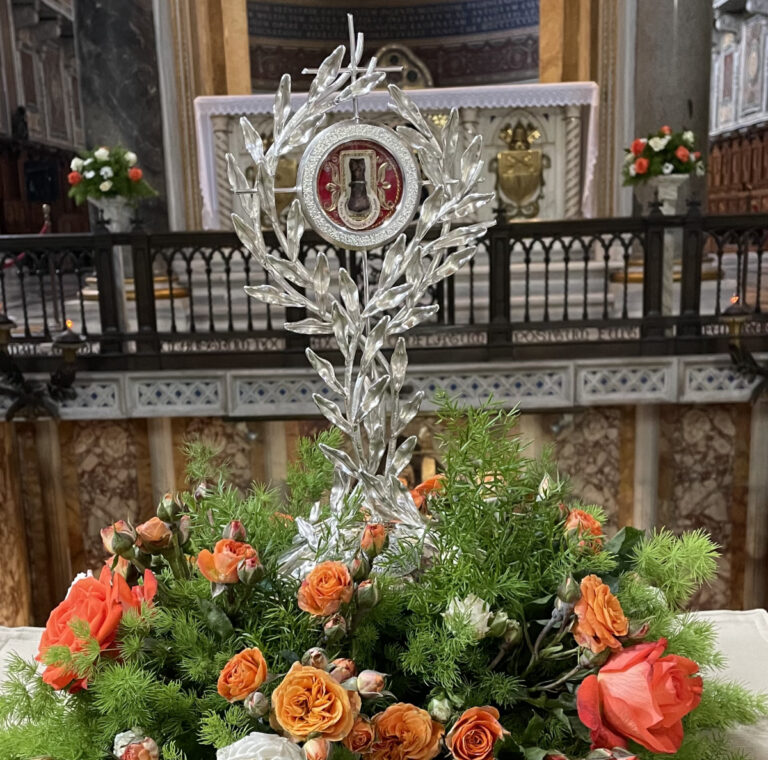Blessed Francis Mary of the Cross Jordan
BlESSED FRANCIS JORDAN was born June 16, 1848, in Gurtweil, a little village in Baden, Germany, Situated between Waldshut and Thiengen, not far from the Swiss border. He was baptized on the following day and received the name of John Baptist.
His parents, Lorenz and Notburga, were faithful Catholics who instilled his faith from the earliest age. Lorenz worked as a hired laborer at a nearby inn, but after a serious accident that cost him the use of his leg, he worked as the town crier of Gurtweil. His mother was forced to do the bulk of the work at the house, as well as hiring herself out to other families to help support her husband and three sons. Despite the poverty of the family, Jordan was able to attend elementary school in Gurtweil from 1855 to 1862. Given the family’s simple circumstances, the expectation was that Jordan would then take an apprenticeship and spend his life as an artisan. Following the death of his father in 1863, he did just that, taking an apprenticeship in Waldshut as a painter, gilder, and decorator from 1864 to 1866. Upon the completion of his training, he worked as a journeyman in 1867.
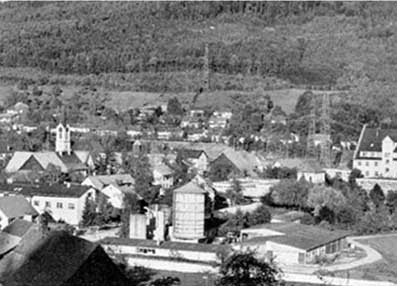
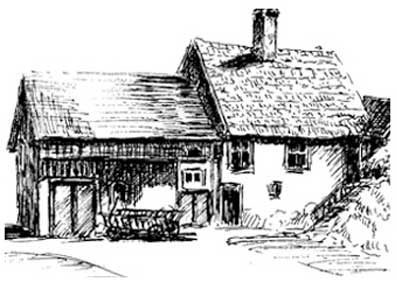
On April 7, 1861, Jordan made his First Communion. According to witnesses after receiving Communion, Jordan looked around, then up to the ceiling, and appeared very distracted. Afterwards, he explained that a white dove had fluttered around his head and then disappeared. While some questioned this story, from this point on, Jordan’s behavior changed. He became a very devout young man, spending much time in private prayer. His piety continued to grow as he matured into young adulthood.
During his time as a journeyman, Jordan joined the Kolping Society, an association of Catholic artisans. He traveled extensively during his months as a journeyman, gaining a sense of both the goodness of people and the many different challenges and evils of the age. He recognised that there were many forces that drew young persons away from God and His Church. Through prayer and reflection he gradually became aware of his voca¬tion: that God was calling him to be a priest.
This was no easy call for a man of Jordan’s position. His father was now deceased and his family had no resources with which to assist him in his call. Furthermore, he had no secondary studies and was rather old to be pursuing ordination. Fi¬nally, he knew that his family relied on him for support. But he had experienced God’s call, and so he pursued it doggedly over the next several years.
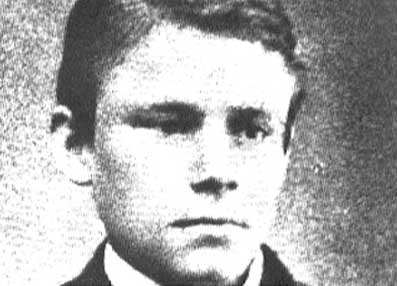
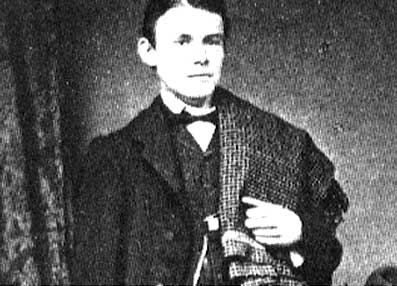
Jordan began by studying privately under Monsignor Werber, pastor of the parish of Waldshut. With him, Jordan began the language studies required for seminarians. Jordan proved to be a masterful linguist and learned countless languages throughout his life. After studying with Werber and his assistant, Jordan then completed his middle school (gymnasium) studies at Constance, graduating in 1874. These years were filled with much financial hardship for Jordan. He attended the University of Baden in Freiburg where he completed his studies in theology in 1877. Jordan took his final year of preparation for priesthood at the archepiscopal seminary of Saint Peter outside Freiburg, and was ordained a priest on July 21, 1878. The political climate of Germany prevented Jordan’s bishop from assigning him to a parish; consequently, he was sent to Rome to continue language studies in 1878. There he attended the German College of Campo Santo. By this time, he was also beginning to understand that God was calling him to more than the life of a simple priest. God was also asking Jordan to found a movement dedicated to the salvation of souls. This endeavor was to cost Jordan dearly, and yet would be the fulfillment of God’s purpose for his life.
In 1880, Jordan, along with approximately twenty other priests, set out on a journey to the Middle East. They traveled first to Egypt and then to Palestine, where Jordan visited all of the places of Christ’s life on earth. On March 13, in the Church of the Holy Sepulcher in Jerusalem, he wrote out what many regard as the first outline of what would become his Society.
Jordan continued his studies in the Holy Land, but made a visit to Lebanon as a break. It was there on a mountain, gazing out over the cedars of Lebanon, that Jordan had a profound religious experience. He pondered the words of Christ at the Last Supper: “Now this is eternal life: that they should know Thee, the One True God, and Jesus Christ, Whom Thou has sent” (John 17: 3)”. He was deeply moved by this experience. These words became the inspiration for his new society, and its primary mission. Upon his return to Rome in August 1880, Jordan was ready to begin his work. Father Jordan’s work received the name Apostolic Teaching Society, and on December 8, 1881, its first grade was officially inaugurated in Rome, at Piazza Farnese 96. A year later the name was changed to the Catholic Teaching Society, and in November, 1882, the growing community with Father Jordan moved to a building in Borgo Vecchio 165, which became their Motherhouse. Several months later the structure was changed into two religious congregations, one of men and one of women. A few years later the community of women separated from Jordan and became the Sisters of the Sorrowful Mother. In 1893 the men’s community received its current name: Society of the Divine Saviour.
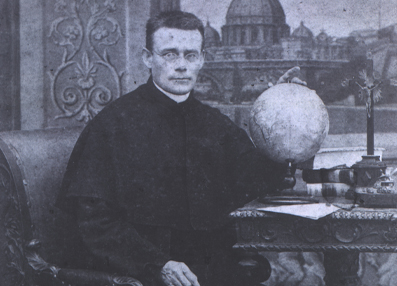
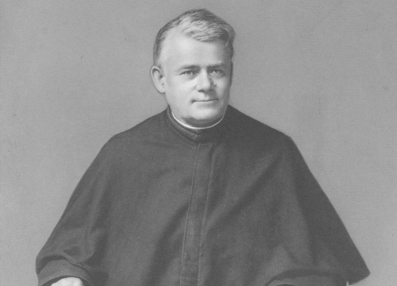
Father Jordan devoted himself totally to the work of developing his institute as its founder, spiritual guide, and superior general. This multiple role was not easy for him, as it entailed serious effort, especially when he faced different organizational, financial and personnel difficulties. At the same time, however, it gave him a profound internal joy, based on his unshakeable trust in Divine Providence and on his deep conviction that it was the way of putting into life his foundational vocation and a contribution to the salvation of souls.
Thanks to his great determination he founded a second female religious congregation (Sisters of the Divine Saviour) in 1888 with Therese von Wuellenweber (Blessed Mary of the Apostles). Another important development was taking over a mission in Assam, as well as founding new houses of the Society in various countries of Europe and other parts of the world. Through all these experiences Father Jordan matured as a human being, as a religious, and as a priest and founder, developing his personality and growing spiritually. The foundation of this spiritual growth was his deep love of God and neighbour, his perseverance in prayer, his trust in Divine Providence, as well as his humility, love for the Eucharist, courageous acceptance of the cross, and fidelity to the Church. Over the course of time Father Jordan began to be considered as a man who led a holy life, both by the members of his community and by people from outside. At the same time he witnessed the important development of his work both geographically and numerically.
In 1915, because of World War I, the Society leadership, together with Father Jordan, was forced to move from Rome to neutral Switzerland. After withdrawing from the active administration of his institute at the general chapter in 1915, Father Jordan spent the last three years of his life in Fribourg (Switzerland). He died in a small hospice in Tafers near Fribourg on September 8, 1918, and was buried in the local parish church. In 1956 his mortal remains were transferred to the Society Motherhouse in Rome. In 1942 his process for beatification was officially started.
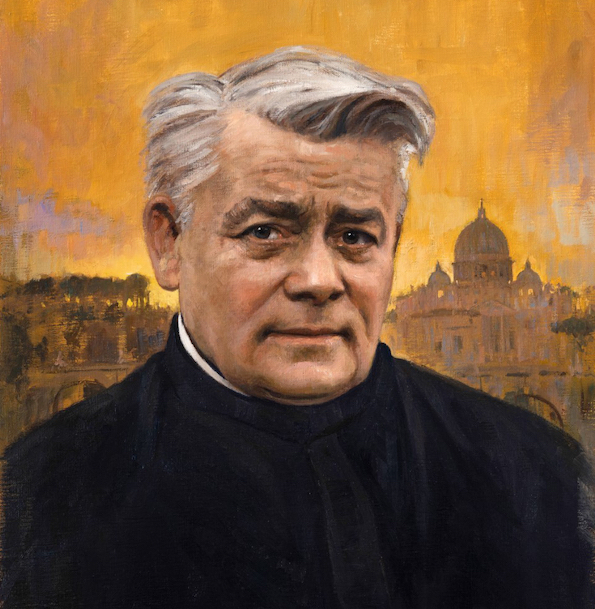
On December 14, 2006, the “Positio on Virtues” was submitted to the Historical Consultors who issued a positive verdict on June 5, 2007. On January 22, 2010, the Congressus Peculiaris of Theological Consultors met and also issued a positive result. The cardinals and bishops at their regular meeting on January 11, 2011, having heard the report from the presenter of the cause (Ponens), His Eminence Most Rev. Msgr. Lino Fumagalli recognized that the Servant of God did demonstrate the theological virtues and the cardinal virtues to a heroic degree along with the other associated virtues.
His Holiness Benedict XVI accepted and ratified the decision of the Congregation for the Cause of the Saints and declared: it is clear that the Servant of God, Francis Mary of the Cross (known in civil society as Johann Baptist Jordan) Founder of the Society of the Divine Saviour as well as the Congregation of the Sisters of the Divine Saviour, possessed to a heroic degree the theological virtues, faith, hope, and charity towards both God and neighbor, along with the cardinal virtues prudence, justice, temperance and fortitude, and other attendant virtues. The Holy Father has ordered this decree to be published and be entered in the files of the Congregation for the Cause of the Saints.
Later, Pope Francis, has authorized the promulgation of the decree regarding the miracle attributed to the intercession of Father Francis Mary of the Cross (in secular life John Baptist) JORDAN, Founder of the Salvatorians.
The Miracle
A young couple that was expecting a baby in 2014 in Jundiai (Brazil), was informed by several medical doctors and specialists that their unborn child was suffering an incurable bone disease (skeletal dysplasia). Being members of a group of Lay Salvatorians, the parents began to pray through the intercession of the Venerable Servant of God, Fr. Francis Jordan, inviting other members of the Salvatorian Family to join them. The child was born in a completely healthy condition on 8 September 2014, the day of Fr. Francis Jordan´s death anniversary. After the required canonical procedures had been successfully completed, the Holy Father, Pope Francis declared that this miraculous healing was worked by God through the intercession of Fr. Francis Jordan.
The declaration of the Pope on 19 June 2020 finishes the process of the miracle and opens definitely the way towards the beatification of Fr. Francis Jordan. As of May 15, 2021, he is “Blessed Francis Jordan.”
